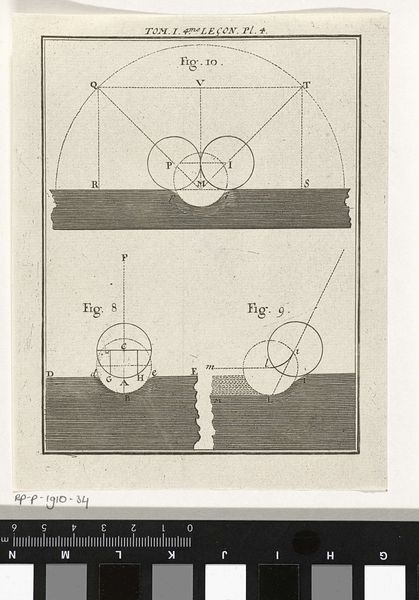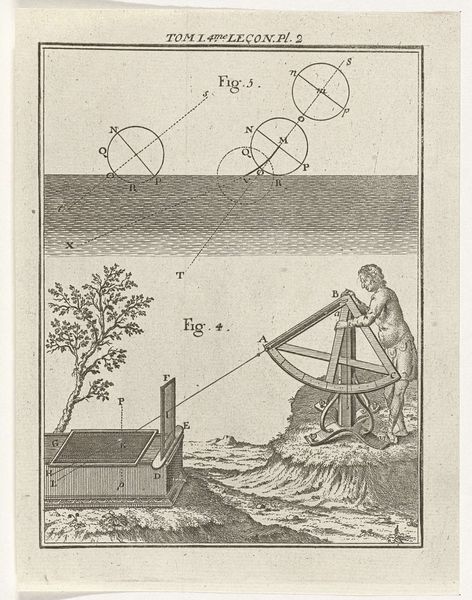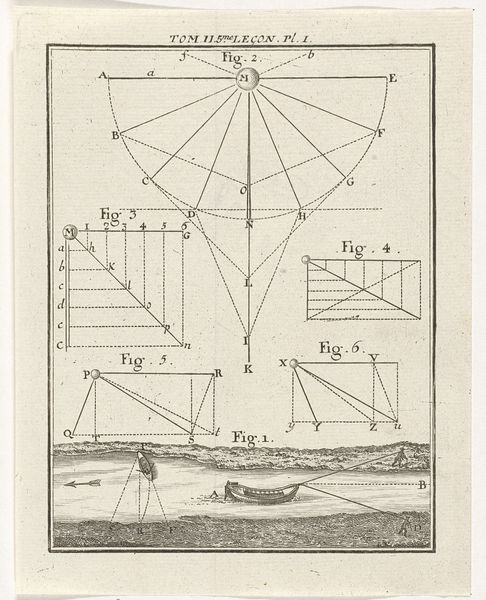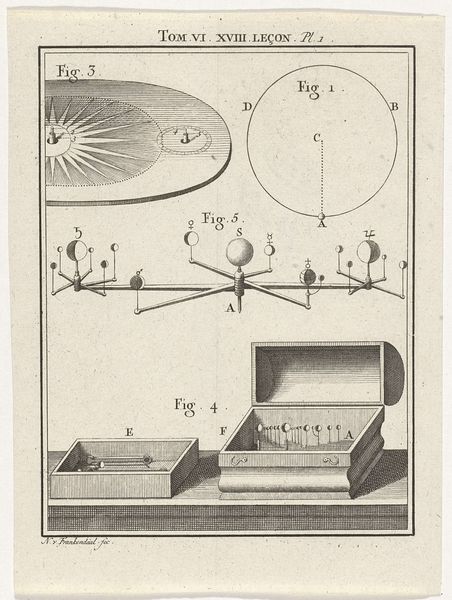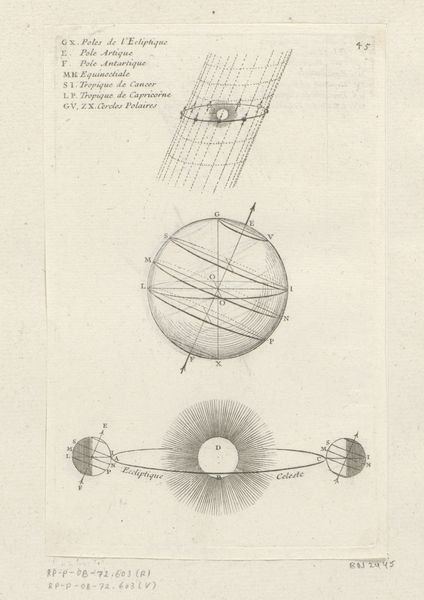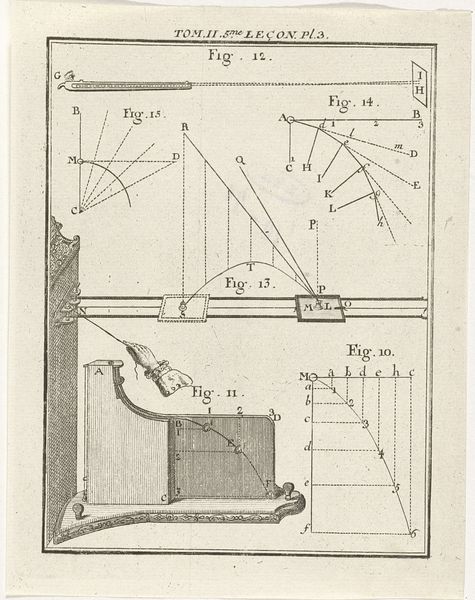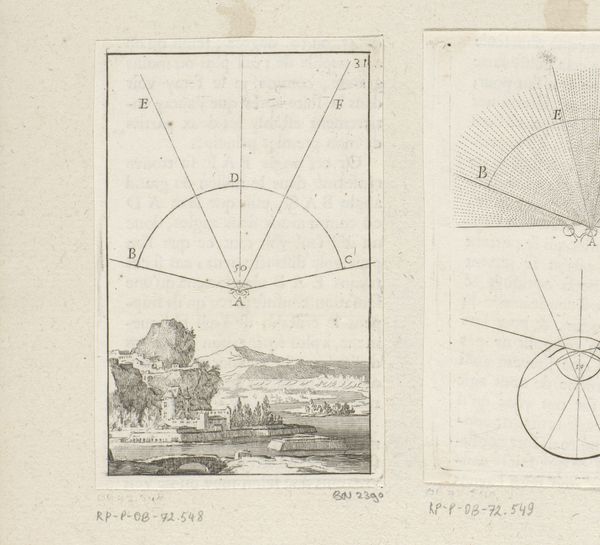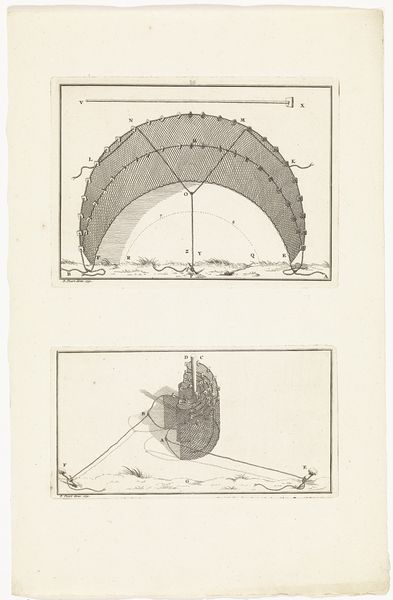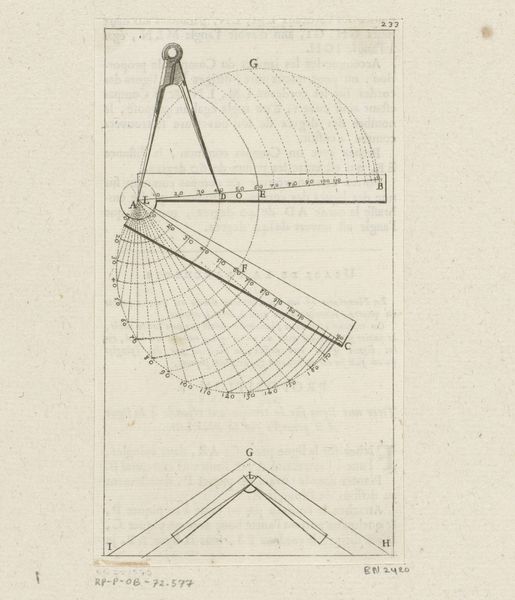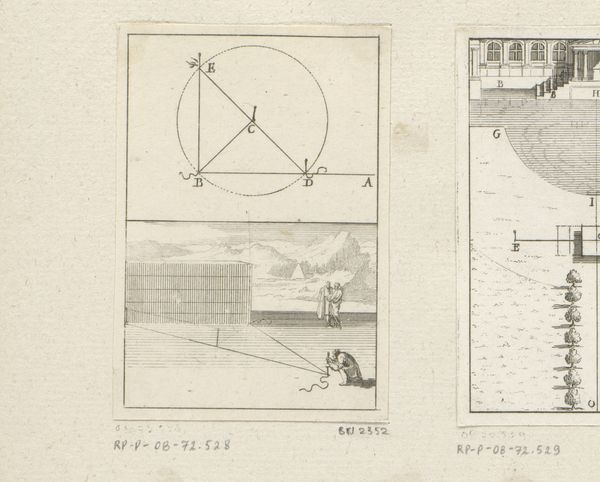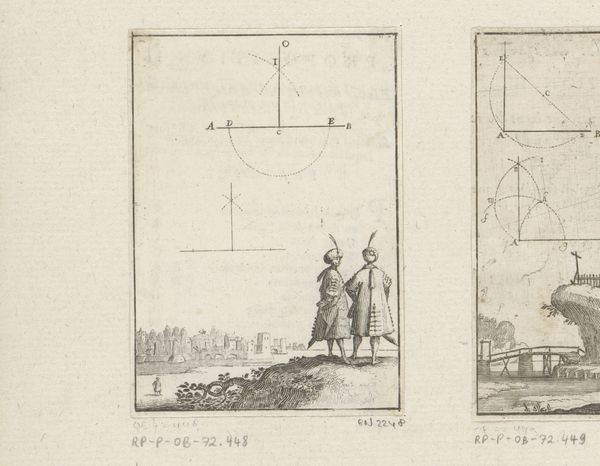
print, engraving
# print
#
old engraving style
#
geometric
#
line
#
history-painting
#
academic-art
#
engraving
Dimensions: height 160 mm, width 126 mm
Copyright: Rijks Museum: Open Domain
This is "Natuurkundige Instrumenten" by Nicolaas van Frankendaal, created around the 18th century. The print presents a stark composition dominated by geometric forms and fine lines. Notice how the circles and triangles in the upper half contrast with the structured lines of the instrument and organic mound below. Van Frankendaal uses line and geometry to explore scientific concepts. These lines aren't just descriptive; they are structural, forming the very architecture of understanding. How do these shapes and arrangements reflect the Enlightenment's emphasis on reason and order? The image can be read semiotically: circles symbolize completeness, lines denote direction, and the overall structure illustrates the intersection of theory and practice. The piece destabilizes the boundary between art and science, using aesthetic representation to convey intellectual concepts. Consider how this formal approach turns a scientific diagram into a compelling visual statement, reflecting a broader cultural inclination towards empirical observation during the Enlightenment. The image stands as a testament to an age where art and science converged, each informing the other in the pursuit of knowledge.
Comments
No comments
Be the first to comment and join the conversation on the ultimate creative platform.
